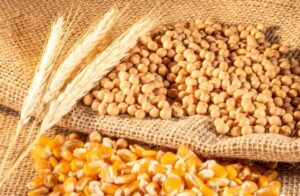
Imports of trucks to Ukraine in January-March 2025 decreased by 1.3% in monetary terms compared to the same period in 2024, to $215.15 million, according to statistics from the State Customs Service.
According to the published data of the State Customs Service, in particular, in March, imports of these vehicles decreased by almost 13% compared to March 2024 – to $69.62 million.
As reported, in January of this year, truck imports decreased by 6% compared to January-2024, and in February, an increase of 21% was recorded compared to February last year.
Most trucks were imported in the first quarter from the United States – $50.06 million (23.3% of imports), Poland – $47.25 million (22.15%) and France – $35.27 million (16.4%).
A year ago, the top three truck-supplying countries were Poland (23.2% of total truck imports or $50.6 million), China (10.7% or $23.4 million) and France (10.3% or $22.4 million).
Imports from all other countries decreased by 32.4% to $82.2 million in January-March.
At the same time, according to statistics, Ukraine exported only $2.5 million worth of trucks in three months, mostly to Romania (59.4% of truck exports), Turkey (38%), and Moldova (2%), while a year earlier there were insignificant exports ($0.5 million).
As reported, in 2024, imports of trucks to Ukraine in monetary terms increased by 30% compared to 2023 – up to $947.84 million, most of them were imported from Poland (almost 20%).

According to the State Customs Service, in January-March 2025, Ukraine sharply increased imports of electric generating sets and rotating converters (UKTZED 8502) to $432.9 million, up 7.7 times compared to the same period in 2024.
In March, imports amounted to $88.2 million: this is 6.3 times higher than in March 2024, but 47% less than in February 2025.
Main suppliers:
– Czech Republic – $85.7 million (19.8%)
– USA – $77.3 million (17.85%)
– Austria – $58.7 million (15.87%)
For comparison, in 2024, imports of generators increased by 3.7% to $732.5 million. As a reminder, since July 2024, Ukraine has exempted the import of generators from VAT and customs duties.
The main manufacturers and brands of generators whose products are actively represented in Ukrainian imports are:
– Honda Power (Japan)
– Kohler (USA)
– SDMO (France)
– Geko (Germany)
– Endress (Germany)
– FG Wilson (UK)
– Tedom (Czech Republic)

In January-March 2025, the volume of imports of passenger cars to Ukraine, including cargo and passenger vans and racing cars (UKT FEA code 8703), exceeded $1.131 billion in monetary terms, which is almost equal to the figure for the first quarter of last year ($1.134 billion).
According to statistics released by the State Customs Service (SCS) of Ukraine, in March this year, passenger cars worth $411.23 million were imported to Ukraine, which is 16.6% more than in March 2024, while in January there was a 17.8% drop compared to January 2024, and in February the increase was 3% compared to February last year.
The three largest suppliers of cars to Ukraine in January-March this year were Germany, the United States and Japan, while last year it was the United States, Germany and China.
In particular, car deliveries from Germany increased by 35.7% to $228.94 million, and their share in the structure of car imports amounted to 20.24% compared to 14.88% a year earlier.
Ukraine imported $181.39 million worth of cars from the United States (down 14%). Japan, which last year was not among the top three countries with the largest car imports, supplied $108.35 million worth of cars over three months this year.
Notably, the top three did not include China, whose imports of passenger cars to Ukraine amounted to $138.18 million a year ago.
From other countries, all imports of passenger cars in the period amounted to $612.58 million, compared to $615.58 million in the first quarter of last year.
At the same time, in the first quarter of this year, Ukraine exported only $2.51 million worth of such vehicles, in particular to the UAE (51.6% of exports), the Czech Republic and Slovakia, while a year ago in the same period the country supplied $5.5 million worth of them to foreign markets, mainly to Canada, the UAE and the United States.
According to the State Customs Service, in the total structure of imports of goods to Ukraine in January-March, the share of passenger cars was 6.13%, in the structure of exports – 0.03%.
As reported, in 2024, Ukraine imported passenger cars worth $4.385 billion, 8% more than a year earlier, and exported $10.1 million (2.7 times less).

In the first quarter of 2025, Ukraine increased imports of batteries and separators to $217.82 million, which is 2.5 times more than in the same period in 2024. This is evidenced by the State Customs Service data.
In March, imports amounted to $63.6 million, which is more than double the figure for March-2024 and 7% more than in February-2025.
The main suppliers:
– China – 79.2%.
– Bulgaria – 5.3%.
– Taiwan – 3.8%.
Exports of batteries from Ukraine in the first quarter – $11 million, key destinations: Poland (33.7%), France (19%), Germany (13.9%).
In 2024, imports of batteries to Ukraine amounted to $950.6 million, more than doubling compared to 2023.
The main battery manufacturers and brands whose products are actively represented in Ukrainian imports are:
– CATL, BYD, Gotion (China)
– Varta (Germany)
– Fiamm (Italy)
– Bosch (Germany)
– Yuasa (Japan)

In the period from 2022 to January-March 2025, Moldova imported 99.22% of soybeans from Ukraine, which supplied 56.64 thsd tonnes of the total imports of 57.08 thsd tonnes, according to the Moldovan online resource agroexpert.md.
According to the report, the total trade turnover for the analyzed period amounted to 71.42 thsd tonnes, including 79.9% of imports and 20.1% of exports of domestic beans.
Ukraine was the leader in the supply of soybeans throughout the analyzed period. In 2022, it accounted for 99.99% of imports (14.84 thsd tonnes), in 2023 – 97.19% (10.08 thsd tonnes), in 2024 – 99.50% (30.20 thsd tonnes), and in the first quarter of 2025 – 9%.
Other importing countries had a much smaller share. Thus, Germany ranked second with a share of 0.39% of total imports (0.22 thousand tons), with all imports from this country in 2023. Romania is on the third place with the share of 0.26% (0.15 thsd tonnes), the main volume of imports from this country was in 2024.
At the same time, Moldova exported soybeans to 10 countries in 2022-January-March 2025 and totaled 14.34 thsd tonnes.

In 2024, Ukraine increased its exports of agricultural products to the European Union by 11%, according to the EU’s report on trade in such products last year.
“The EU continued to import agricultural food products from various trading partners, with Brazil, the United Kingdom, and Ukraine being the main sources. Imports increased from Côte d’Ivoire, Ukraine and Nigeria, while they decreased from Russia and Australia,” the report, the full text of which is published on the European Commission’s website, says.
According to the published statistics, Ukraine was the third source of imports of agri-food products to the EU in 2024 (8% of the total value of imports). Agricultural imports from Ukraine to the EU increased by 11% compared to 2023 (+EUR1.3 billion) and reached EUR13 billion. This was mainly due to an increase in the share of two key commodities in imports: vegetable oils (EUR3 billion in 2024, +EUR946 million compared to 2023), and oilseeds and protein cereals (EUR3.1 billion, +EUR709 million).
At the same time, imports of Ukrainian grains to the EU decreased by 12% in value (to EUR 4.5 bln) due to lower prices, but their volume increased by 6% year-on-year.
At the same time, the total volume of European agricultural imports in 2024 reached a record high of EUR171.8 bln (+8% compared to 2023, or +EUR12.4 bln).
In terms of consumption of European agricultural exports, Ukraine ranks 13th with EUR3.634 billion, which is about 2% of the EU’s total agricultural exports (EUR235.4 billion). At the same time, in terms of consumption of European imported agricultural products, Ukraine showed an increase of 5% compared to 2023, when the country imported agricultural products worth EUR3.461 billion from the EU.